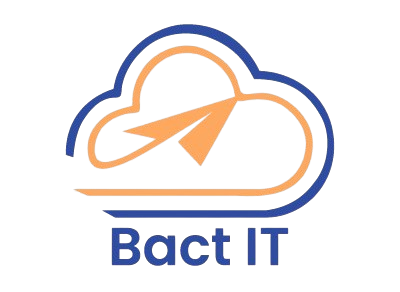Certified Ethical Hacker

We are committed to equipping individuals and organizations with the tools and expertise they need to thrive in a rapidly changing digital world.
Request A Quote !
Certified Ethical Hacker (CEH) Course Outline
Duration: 40–50 Hours
Level: Intermediate to Advanced
Delivery Mode: Online / Offline
Target Audience: Cybersecurity professionals, IT professionals, Penetration testers, Network administrators
Prerequisites: Basic knowledge of networking, TCP/IP, and security concepts
Module 1: Introduction to Ethical Hacking
- What is Ethical Hacking?
- The Importance of Ethical Hacking in Cybersecurity
- Understanding the Legal and Ethical Implications of Hacking
- CEH Exam Overview and Structure
- Types of Hackers: White-hat, Black-hat, and Gray-hat
- Hacking Phases: Reconnaissance, Scanning, Gaining Access, Maintaining Access, Clearing Tracks
Module 2: Footprinting and Reconnaissance
- Understanding Footprinting and its Importance
- Types of Footprinting: Active and Passive
- Tools for Reconnaissance: WHOIS, DNS Interrogation, Traceroute
- Using Google Dorks for Information Gathering
- Identifying Target Networks and Systems
- Data Mining and Extracting Information from Social Media
Module 3: Scanning Networks
- Introduction to Network Scanning
- Types of Scanning: Port Scanning, Network Scanning, Service Scanning
- Scanning Techniques: TCP, UDP, SYN, Ping Sweep
- Network Scanning Tools: Nmap, Netcat, and Hping
- Identifying Open Ports and Vulnerabilities in a Network
- Detecting Firewalls and IDS/IPS
Module 4: Enumeration
- What is Enumeration?
- Enumeration Techniques for Usernames, Shared Resources, and NetBIOS
- SNMP Enumeration for Network Devices
- DNS Enumeration for Domain and Host Information
- Active Directory Enumeration Techniques
- Using Tools like Netcat and SNMPwalk for Enumeration
Module 5: System Hacking
- Introduction to System Hacking Techniques
- Gaining Access: Password Cracking and Hashing Techniques
- Privilege Escalation: Exploiting Vulnerabilities to Gain Higher Access
- Maintaining Access: Rootkits, Trojans, and Backdoors
- Clearing Tracks: Logs and Audit Trails
- Post-Exploitation Techniques and Evidence Collection
Module 6: Malware Threats
- Overview of Malware: Types and Functions
- Viruses, Worms, Trojans, and Spyware
- How Malware is Delivered: Social Engineering, Email, Drive-By Downloads
- Analyzing Malware: Reverse Engineering and Static Analysis
- Keyloggers and Rootkits: Identification and Removal
- Prevention and Detection of Malware
Module 7: Sniffing and Evasion
- Introduction to Sniffing and its Role in Hacking
- Packet Sniffing Tools: Wireshark, tcpdump, and Ettercap
- How to Perform ARP Poisoning and DNS Spoofing
- Sniffing Unencrypted Network Traffic
- Session Hijacking and Mitigation Techniques
- Evasion Techniques to Bypass IDS/IPS
Module 8: Web Application Hacking
- Understanding Web Application Security
- SQL Injection: Techniques, Detection, and Prevention
- Cross-Site Scripting (XSS): Types and Countermeasures
- Cross-Site Request Forgery (CSRF) and Security Risks
- Directory Traversal and File Inclusion Vulnerabilities
- Web Application Scanning and Exploitation Tools: Burp Suite, OWASP ZAP
- Web Application Firewalls and How to Bypass Them
Module 9: Wireless Network Hacking
- Introduction to Wireless Networks and Protocols (WEP, WPA, WPA2)
- Cracking Wireless Networks: WPA/WPA2 Cracking using Aircrack-ng
- Wireless Sniffing and Eavesdropping Tools: Kismet, NetStumbler
- De-authentication and Denial of Service (DoS) Attacks
- Wi-Fi Hacking Prevention: Best Practices and Encryption Methods
- Wireless Network Configuration and Security
Module 10: Cloud Computing and Virtualization
- Introduction to Cloud Computing and Virtualization
- Types of Cloud Service Models: IaaS, PaaS, SaaS
- Cloud Hacking Techniques and Vulnerabilities
- Attacks on Virtualization Platforms (VMware, Hyper-V)
- Cloud Security Best Practices
- Penetration Testing in Cloud Environments
Module 11: Cryptography and Encryption
- Introduction to Cryptography and its Role in Security
- Symmetric and Asymmetric Encryption Algorithms
- Hashing Algorithms and Digital Signatures
- SSL/TLS and VPNs: Protecting Data in Transit
- Cryptographic Attacks: Man-in-the-Middle (MitM), Replay Attacks
- Using Tools for Cryptanalysis
Module 12: Penetration Testing Methodology
- Penetration Testing Lifecycle and Methodology
- Information Gathering and Scanning
- Vulnerability Analysis and Exploitation
- Reporting and Remediation of Findings
- Tools and Frameworks for Penetration Testing: Metasploit, Kali Linux, Nessus
- Creating and Delivering a Penetration Testing Report
Module 13: Cybersecurity Laws, Policies, and Ethics
- Overview of Cybersecurity Laws and Regulations
- Ethical Hacking Standards and Legal Constraints
- Confidentiality, Integrity, and Availability (CIA Triad)
- Privacy Laws: GDPR, HIPAA, and Other Compliance Regulations
- Best Practices for Legal and Ethical Hacking
Module 14: Final Project and Exam Preparation
- Hands-on Practical Penetration Testing Project
- Simulating Real-World Ethical Hacking Scenarios
- Preparing for the CEH Certification Exam: Tips and Strategies
- Practice Tests and Final Review
